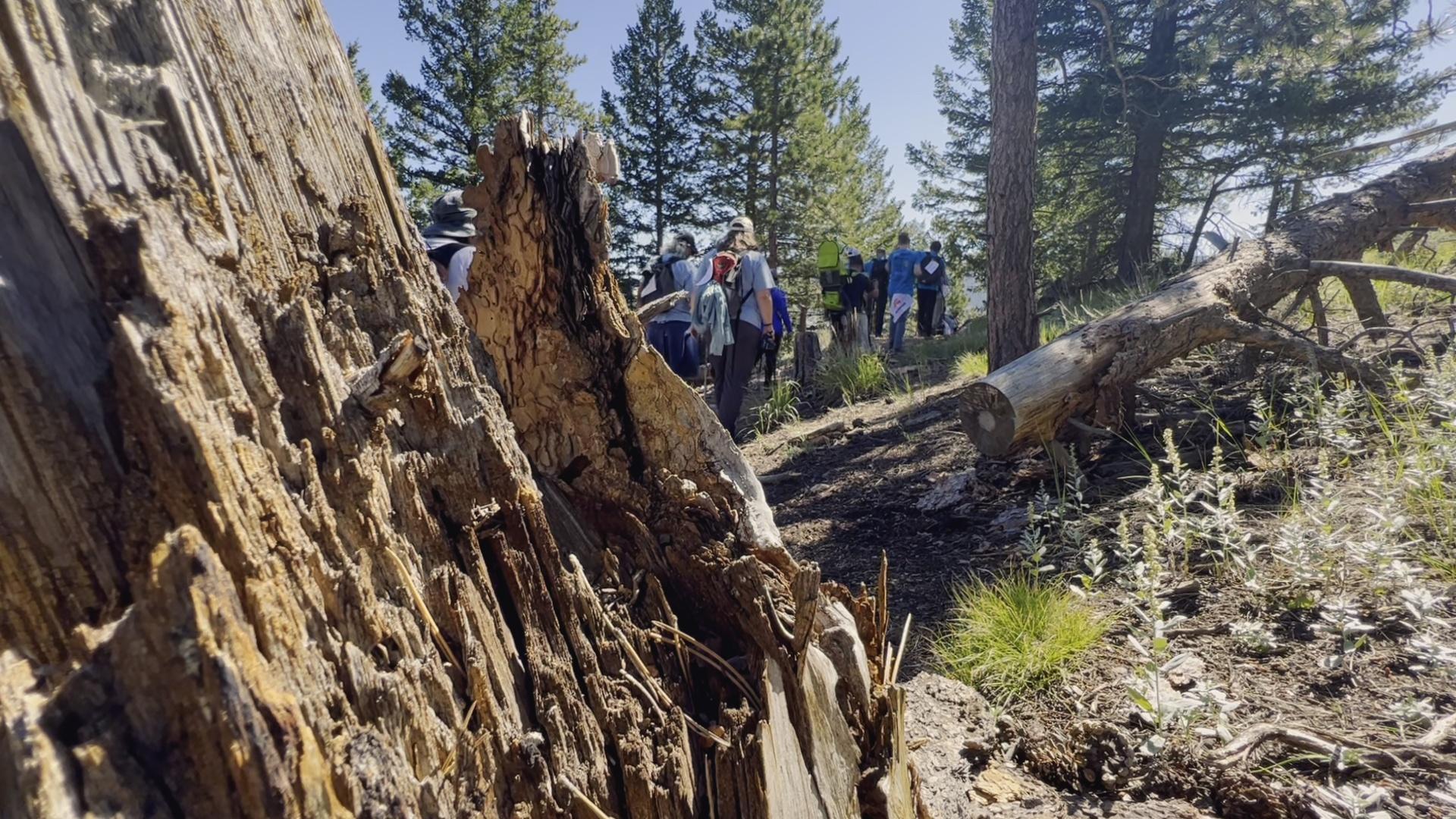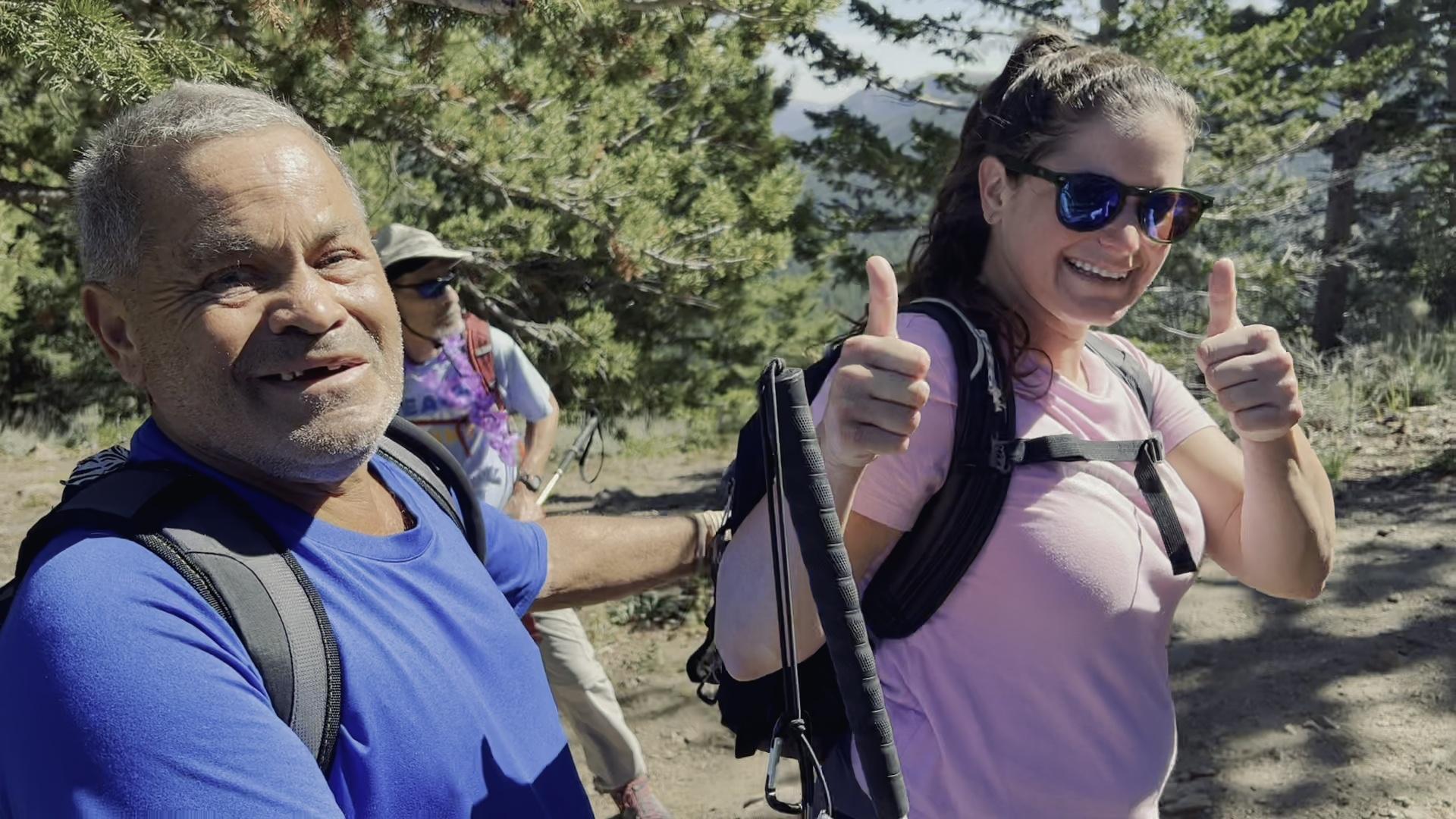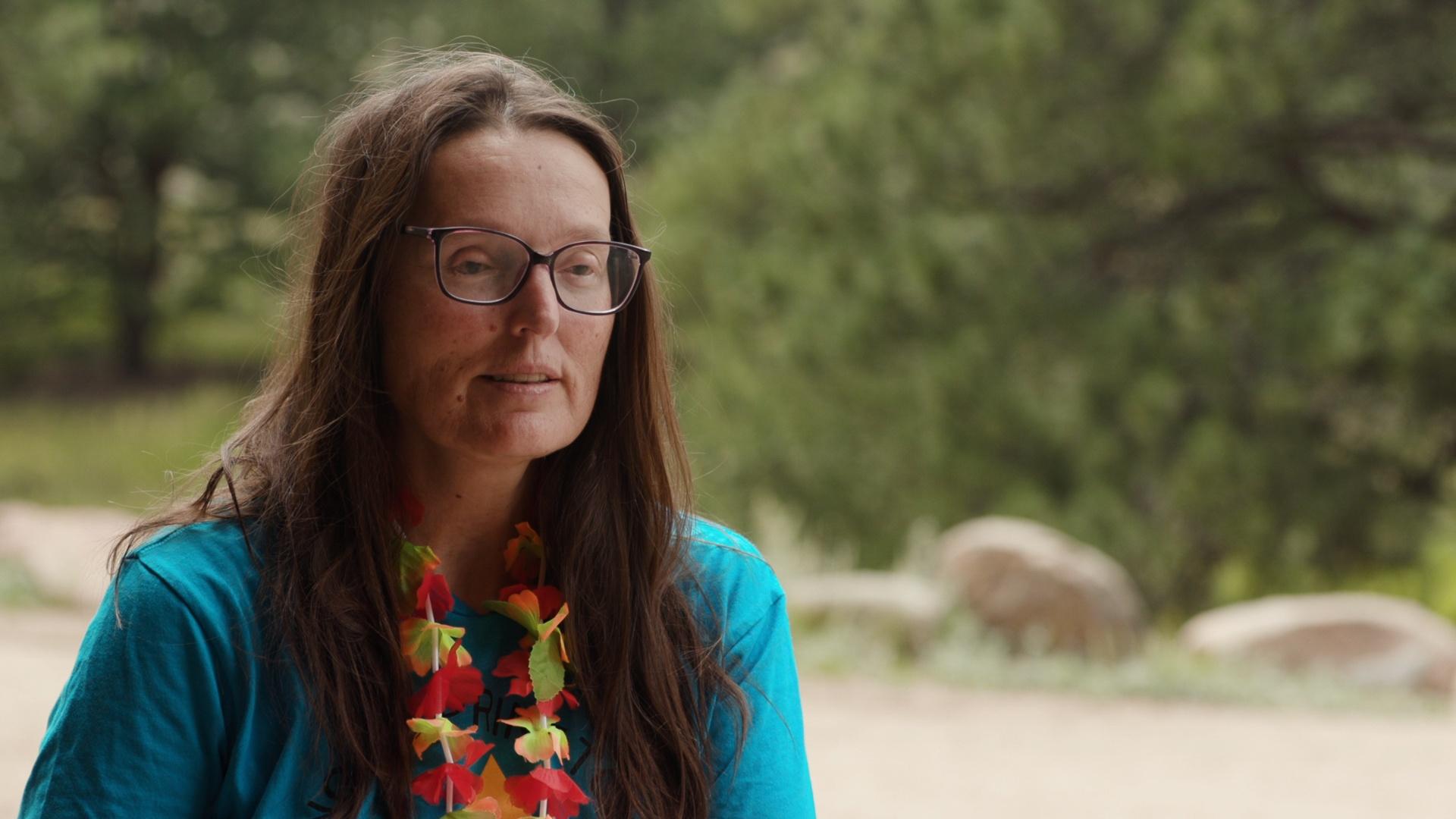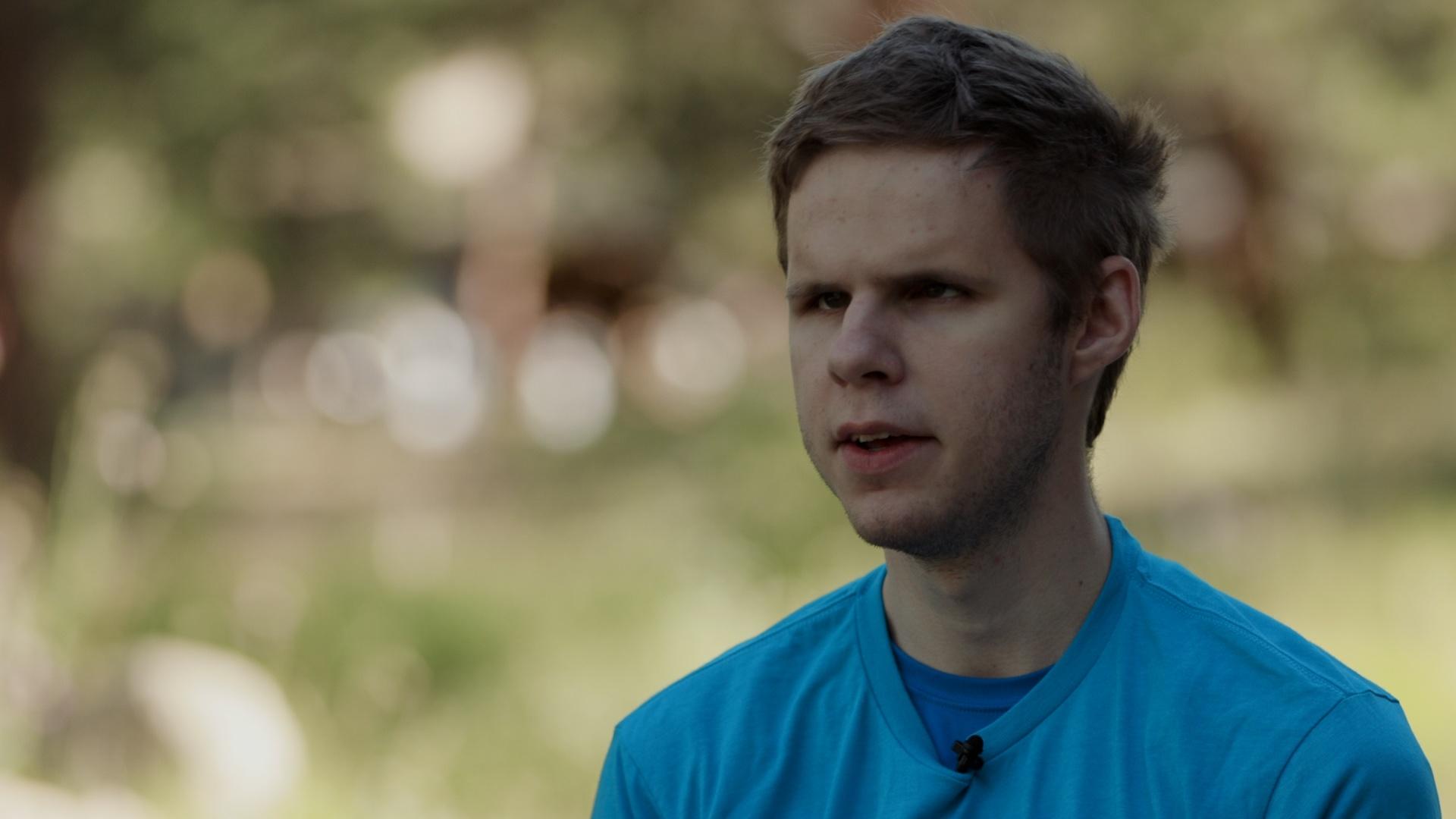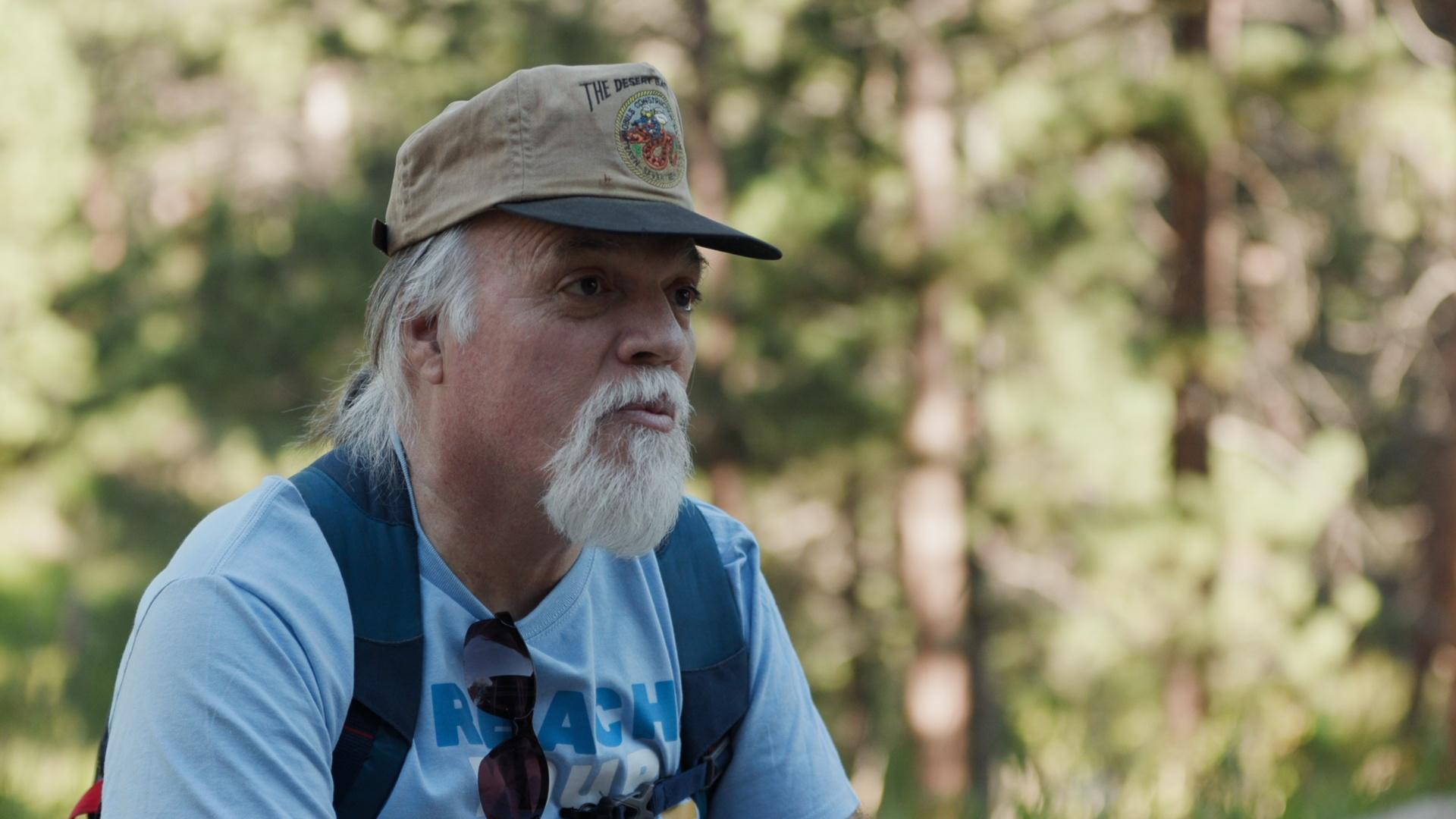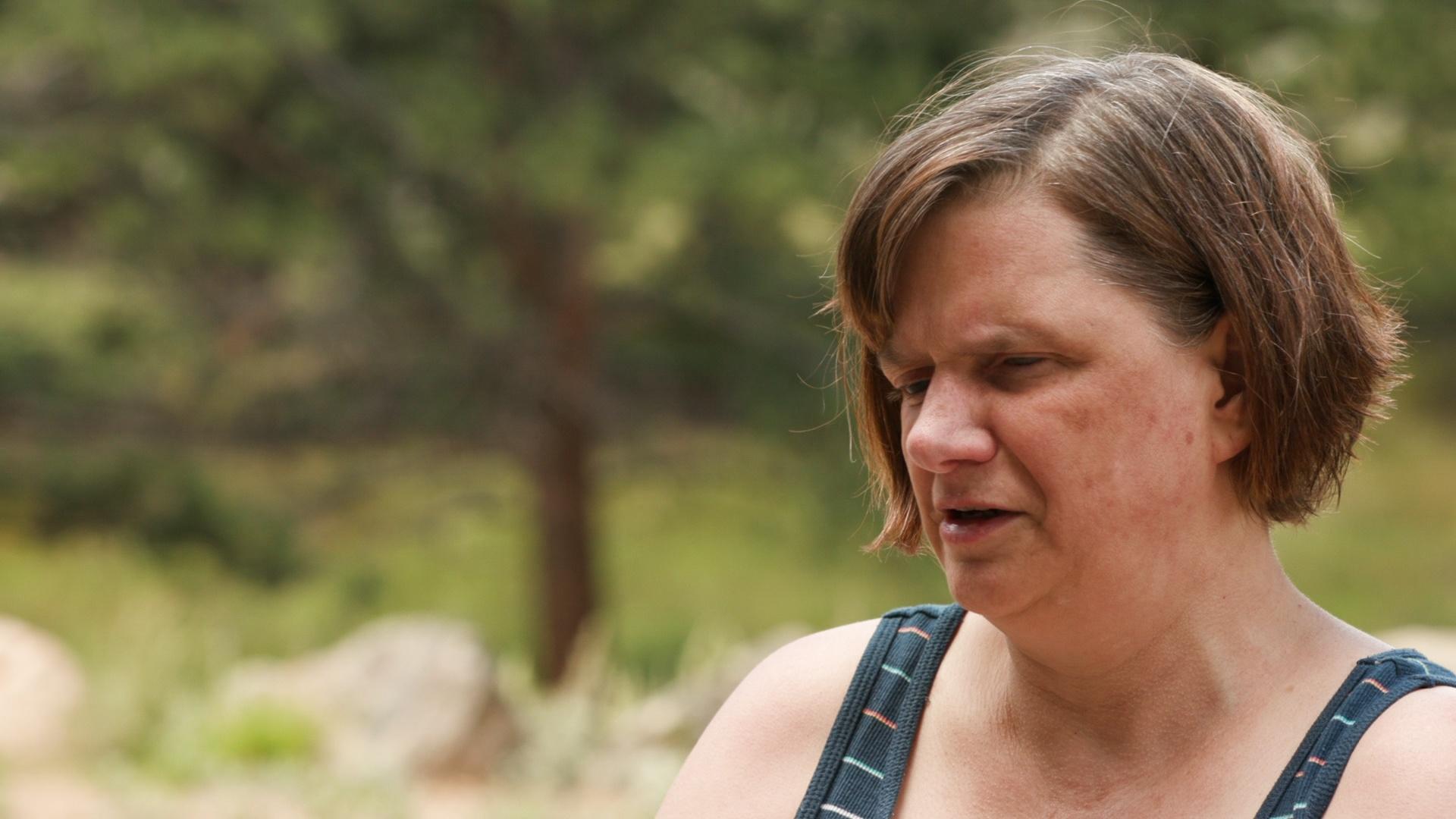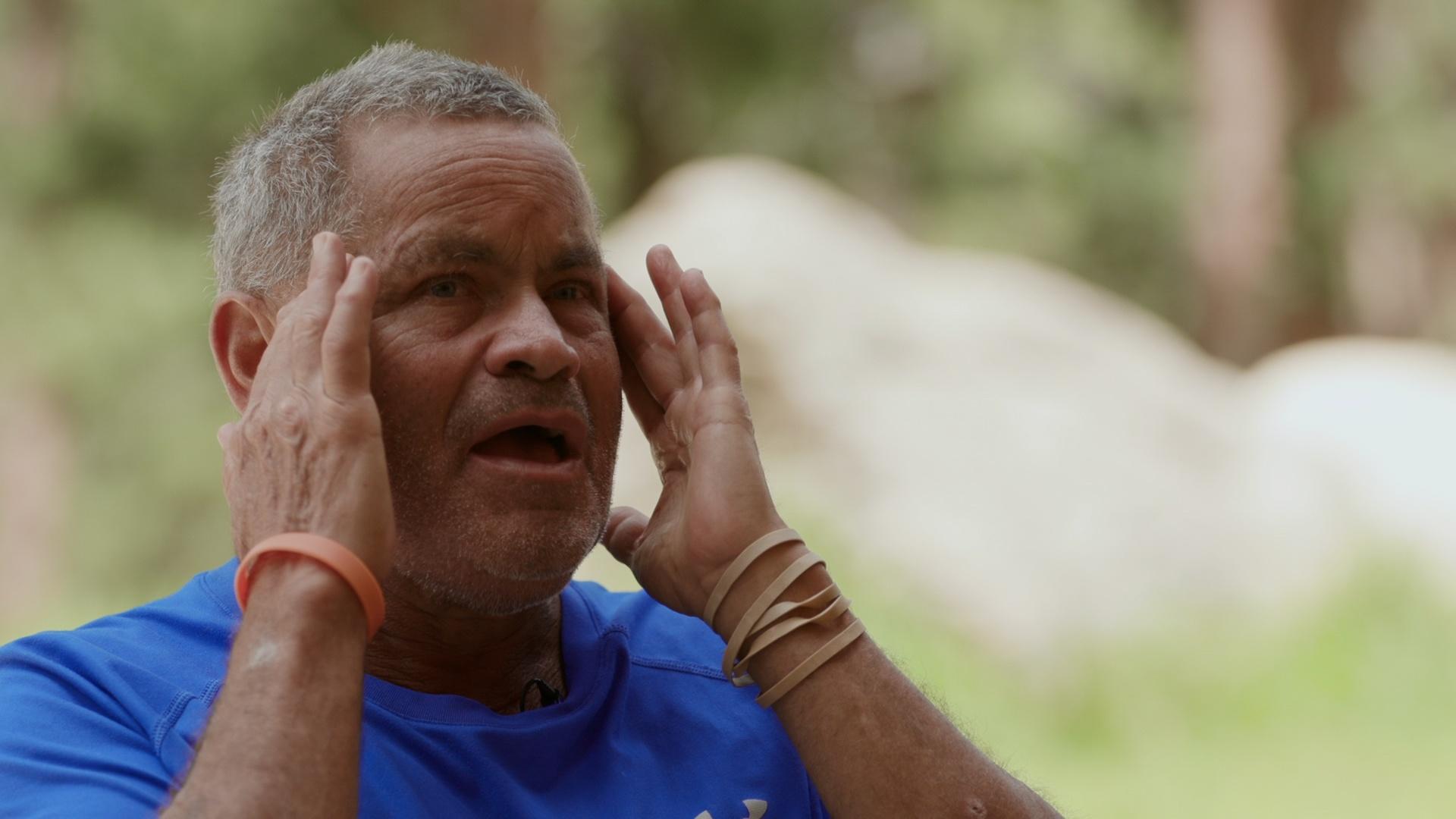ESTES PARK, Colo. — On the trail there’s a common thread among these hikers who have lost some or all their vision: We can do a lot more than people might think.
“Both my parents had disabilities and I just never thought of myself as really having one,” said hiker Cynde Vaughn, who has vision and hearing loss due to Stickler Syndrome, a degenerative connective tissue disorder. “I usually thought of myself as having to convince other people that I could do whatever it was that was needed, but I just needed to find a different way. There are many ways to reach the same place.”
“The advice I usually give people is just think of me like a normal person, because I am a normal person,” said hiker Evan Starnes, who was born with very limited vision due to Leber Congenital Amaurosis, an eye disorder that primarily affects the retina. “Don’t think of my blindness. I mean, of course yes, acknowledge it. But just treat me like you would treat everybody else.”



